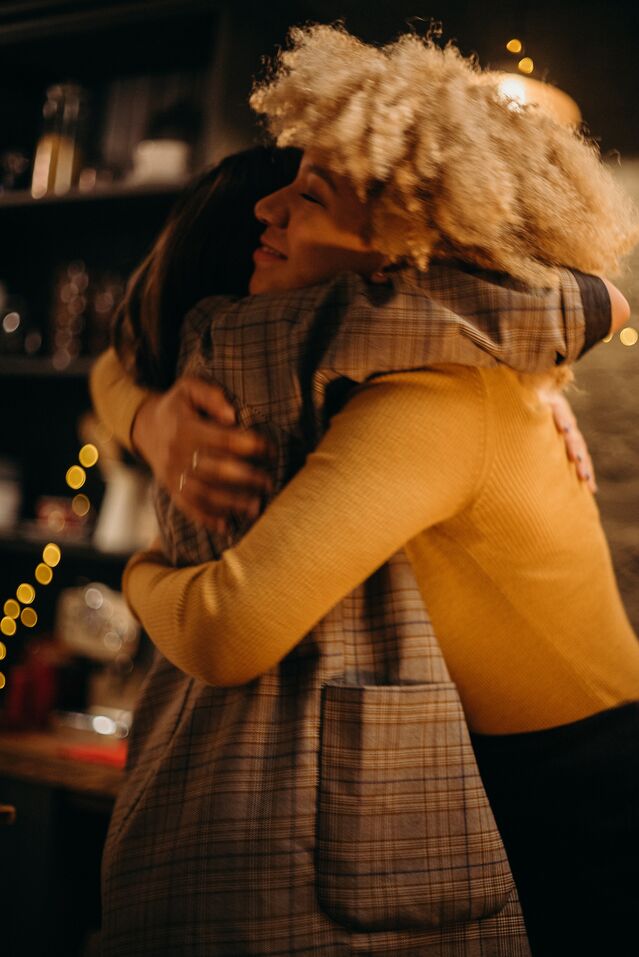Health
7 Tips for Spending the Holidays Alone
How to nurture your social well-being and make the best of a tough situation.
Posted November 22, 2020
It’s hard to look at the curve of COVID-19 cases in the U.S. right now without feeling despair. The pandemic is the worst it’s ever been, leading to new lockdowns. Families are making tough decisions about how to gather for Thanksgiving and Christmas—or whether it’s safer to spend the holidays apart. And winter is coming, which means colder weather will keep us indoors, while shorter, darker days may worsen the doom and gloom we perceive.
That said, recent news about vaccine effectiveness gives us reason to hope. It's a welcome reminder that the pandemic is not permanent. It will end; we just don’t know when yet.
Until then, we need to stay vigilant and committed to physical distancing, wearing masks, and taking other safety measures seriously. So the question becomes: how can we stay connected while this drags on? Especially if we're alone, how can we take care of our social health during the holidays? I have found the following suggestions to be helpful for myself and the communities I work with.
1. Acknowledge how the circumstances make you feel.
Lonely? Frustrated? Sad? Burned out? Depressed? These are natural, valid responses. Give yourself permission to experience them. Know that some days will be harder than others.
If you want to talk through these emotions, or if they become unbearable and inhibit you from functioning, reach out to a therapist or try an emotional fitness class online. Many therapists offer sessions remotely and are trained to help.
2. Reframe the situation to focus on opportunities.
Human connection is going to be different until the pandemic ends. Instead of wishing this wasn’t true, there is value in accepting it, adjusting our expectations, and asking: How can we adapt and make the most of the circumstances?
I’ve worked with a lot of designers in the healthcare space throughout the years, and I serve on the board of the Emergency Design Collective, a nonprofit that brings together designers to tackle pressing public health issues. Through these experiences, I’ve learned that designers embrace constraints as helpful guidelines that give direction to a given challenge.
None of us love the current constraints we’re living with, but perhaps we can benefit from adopting a designer’s mindset—to look at this situation as a design challenge with curiosity and creativity.

3. Use this time to deepen your relationship with yourself.
Connection with others requires a foundation of connection with oneself. If you are spending more time alone than you used to, you might as well strengthen that foundation.
One approach is to cultivate self-compassion, which has been researched and written about extensively by Kristin Neff, an associate professor at the University of Texas at Austin. Self-compassion entails being kind to oneself, recognizing one’s shared humanity, and practicing mindfulness. It has been associated with reduced anxiety and increased psychological well-being. Learn more and try practicing it with these resources.
4. If you haven’t already, form or join a pandemic pod.
Let’s be honest: We all need a hug sometimes! Studies have shown that the social support that hugs provide can buffer against stress and bolster our health.
To that end, organize a pandemic pod with a few people whom you trust and align on safety precautions together. Then stick to them. Although not risk-free, pods enable you to enjoy the psychological benefits of physical touch and in-person interaction.
For information on how to structure these successfully, check out suggestions here and here. If you’re not sure whom to turn to, there are matching programs available across the country, such as the AARP’s mutual aid groups.
5. Think of connection as a muscle that you can strengthen.
In the same way that we might set goals for exercise or healthy eating, we can set goals for connection. Choose whatever cadence and format feel good to you. For example, you might decide to reach out to one person each day by phone, video, or old-fashioned mail and to gather with your pandemic pod at least once a week. The point is to be intentional and consistent about your interactions. Ideally we wouldn’t need to structure connection in this way, but if you’re stuck at home, especially alone, it may help.
There are many local programs for older neighbors to gather virtually, such as the Community Living Campaign in San Francisco and FriendshipWorks in Boston; search online for one in your city. If you want to make new friends or deepen existing relationships at any age, try some of these apps.

6. Cultivate and express gratitude.
The holidays are, after all, a time to share what we are grateful for with loved ones. Voicing our appreciation to others can be a meaningful way to deepen our connections. For instance, researchers experimented with having participants either think about their gratitude for someone or actually express their gratitude to that person. The latter increased participants’ perceptions of the strength of that relationship.
So take this time to write thank you cards and tell your loved ones what they mean to you. Consider reaching out to a former teacher who influenced you when you were younger, that grocery store clerk or barista who always goes the extra mile to be friendly, coworkers you enjoy collaborating with, or other people whom you wouldn’t normally thank.
7. Volunteer.
The research is clear: Giving back to your community can confer a sense of belonging, connection, and purpose that bolsters social well-being in a different way than individual relationships. It gives you a way to channel your emotions into constructive action and have more agency over what can otherwise feel like a powerless situation. It’s also something you can do from the safety of your home. Look for opportunities through VolunteerMatch or ask local nonprofits and community organizations how you can contribute.
I’m not suggesting that these approaches will be as satisfying as spending quality time in person, without the anxiety of catching or spreading COVID-19. At the same time, it's worth taking steps to be more resilient and stay connected during the holidays. If you have other strategies that you find helpful, I’d love to hear from you!




